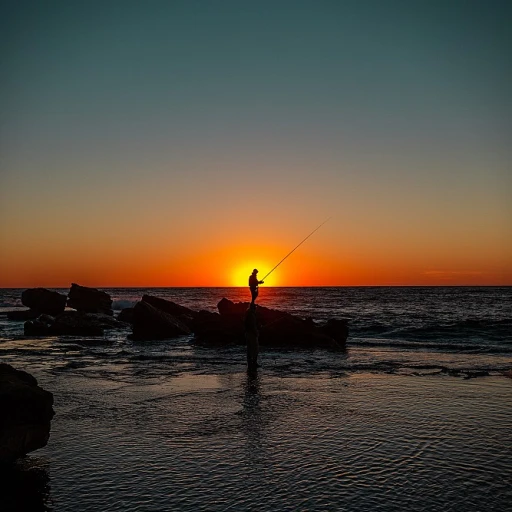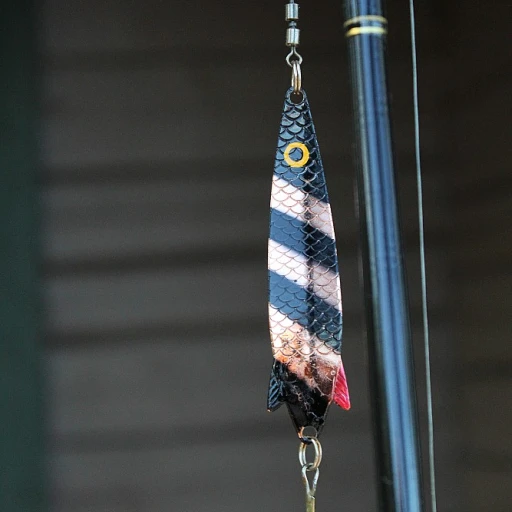
Understanding bass growth and weight
Growth patterns and influencing factors
Catching a solid 3 pound bass isn't just about luck—understanding how these bass grow and gain weight is key. Largemouth bass are known for their notable growth spurts which are heavily influenced by factors such as water temperature, diet, and overall habitat quality. A bass's age, length, and weight are important indicators of its health and growth rate.
How water temperature affects bass growth
Water temperature plays a pivotal role in bass growth. Studies have shown that largemouth bass thrive in warm water temperatures between 65-85°F. In these conditions, their metabolism speeds up, allowing them to feed more frequently and pack on those extra pounds. In contrast, colder water slows down metabolism, leading to slower growth rates.
The importance of diet and habitat
Just like humans, what bass eat significantly impacts their growth. Their diet mainly consists of smaller fish, crayfish, and insects. A well-stocked lake with a diverse food supply encourages healthier, heavier bass. Expert angler John Hoyer notes, "A rich habitat not only houses big bass but also supports the overall fish population, creating a thriving ecosystem."
Length and weight data
To grasp the growth patterns of bass, it's crucial to understand their length and weight relationship. According to the Texas Parks and Wildlife Department, a 3 pound bass generally measures around 16-17 inches in length. The growth rates can be variable depending on the conditions, but typical largemouth bass grow about 1-2 inches per year. An essential tool for estimating a bass's weight from its length is the length-weight table, which provides anglers with valuable data to estimate the weight of a bass based on its length measurements.
The role of age in bass growth
Age is another critical factor that defines the growth trajectory of a bass. Bass in their prime, usually between 3-5 years old, are the most likely to weigh around 3 pounds if they have had access to ample food and the right living conditions. These fish have already surpassed the critical juvenile stage and are now in their peak growth phase.
Further reading
For those of you interested in understanding the size possibilities of other freshwater species, don’t miss out on our comprehensive article on how big do catfish get. It's a must-read for avid anglers looking to expand their fishing knowledge.
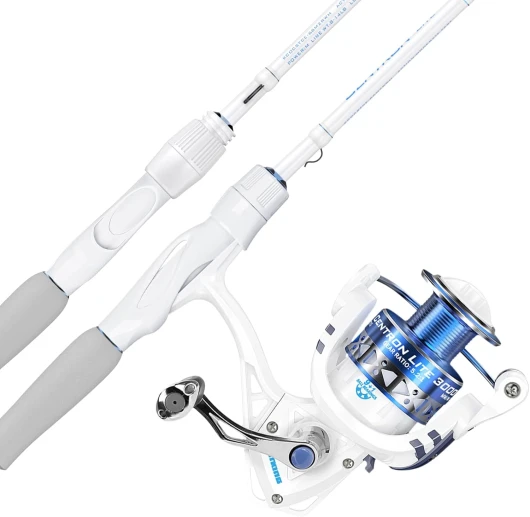
- + IM6 Graphite construction for lightweight performance
- + Stainless Steel Guides with ceramic rings for smooth casting
- + Contoured EVA Handles for comfortable grip
- + Available in Split or Full Rear Handle Design
- + Multiple models available, including 6'6" Medium and 2000 Reel
Optimal fishing spots for 3 pound bass
Prime hotspots for landing that 3-pound beauty
Every seasoned angler knows that location is crucial when hunting for that elusive 3-pound bass. Across the U.S., especially in states like Texas, certain lakes and rivers have built reputations for their thriving largemouth bass populations. Let's break down some of the premier fishing spots that could maximize your chances:
Lake Fork, Texas: Often hailed as one of the best bass fishing lakes, Lake Fork continues to deliver impressive catches. Recent reports indicate that anglers have had high success rates, with a significant portion catching fish weighing 3 pounds or more, emphasizing its potential.
Toledo Bend Reservoir: Straddling the Texas-Louisiana border, Toledo Bend is another hotspot noted for its abundance of healthy, big bass. It's consistently recognized in Bassmaster Magazine's top bass fishing destinations.
California's Clear Lake: Not only known for its scenic beauty, but Clear Lake has also produced bass that tip the scales over 3 pounds. Studies show that the bass here grow rapidly, thanks in part to the lake's nutrient-rich waters.
Florida’s Lake Okeechobee: Boasting a substantial and diverse bass population, Lake Okeechobee is a go-to for bass anglers. The average growth rates here are impressive, with many fish reaching ideal sizes within a few years.
These locations benefit from specific water conditions that support rapid bass growth.To gain more in-depth insights into other iconic fishing spots and their potential for yielding monumental catches, be sure to check out our deep dive into record-breaking bluefin tuna.
Factors influencing bass growth
Water conditions play a massive role in determining the size and weight of largemouth bass. Optimal water temperatures for growth are between 65-80°F. In this range, bass have the best metabolic rates to utilize nutritive resources efficiently.
Additionally, ensuring balanced oxygen levels and managing phytoplankton populations are crucial for supporting the food chain that bass rely on. A study by the Texas Parks and Wildlife Department found that lakes with well-balanced ecosystems produced bass growing upwards of 3 pounds within 4-5 years, compared to lakes with poorer quality water, where similar growth took up to 6-7 years.
Effective fishing techniques for catching big bass
Choosing the right bait
When it comes to snagging a 3 pound bass, the bait you use is a game-changer. You can't go wrong with plastic worms. These bad boys mimic the real thing, making them irresistible to largemouth bass. According to Outdoor Life, plastic worms are the most effective types of bait for catching bass, and they've been so since their invention in the 1940s.
Another popular choice is crankbaits. They dive and wiggle, mimicking baitfish like shad or bluegill, which are natural prey for big bass. These are especially effective in deeper waters, where 3 pounders tend to lurk. Kevin VanDam, a four-time Bassmaster Classic winner, swears by crankbaits for deep-water bass fishing.
If you're more into surface action, topwater lures like poppers and frogs can trigger aggressive strikes. These lures create disturbances on the water surface, simulating struggling prey. Bass can't resist the easy target, making your job a lot easier.
Strategic casting techniques
Alright, you've got your bait. But where and how you cast it matters just as much. To maximize your chances of reeling in a 3 pound bass, target transitional areas—the sweet spots where shallow meets deep water or where vegetation meets open water. Bass often hang out in these zones to ambush their prey.
According to a study by Texas Parks and Wildlife Department, largemouth bass in reservoirs show a preference for structures like submerged timber, weed beds, and drop-offs. It turns out, they love hiding in these areas, waiting for an unsuspecting meal to swim by.
Pro Tip: Practice skipping your bait under docks and overhanging vegetation. Many anglers miss out on these prime spots because they don't want to deal with tricky casts. That’s where the big ones are hiding!
Understanding seasonal patterns
Bass behavior changes with the seasons. Knowing what they're up to can give you a significant edge. In the spring, bass move into shallower waters to spawn. This is prime time for anglers because they're more aggressive and easier to catch but don’t forget to practice catch and release during spawning season!
Summer pushes bass into deeper, cooler waters. Try fishing early in the morning or late in the evening when temperatures are lower. The lure of legendary fishing spots can be your best bet during these hot months, as they often feature deeper lakes and reservoirs.
Fall and winter fishing can be more challenging, as bass slow down and become less active. But with the right techniques, you can still land a 3 pounder. Focus on slow presentations and don't be afraid to downsize your bait.
Analyzing bass length and weight correlations
Understanding the relationship between bass length and weight
It's fascinating how the size of a largemouth bass can tell you heaps about its age, health, and environment. One of the coolest things you'll find is the length-weight relationship, which helps anglers and researchers alike predict the weight of a bass just by measuring its length. So, if you're bragging about a 3 pound bass you caught, you'd better know its length to back up your claim.
Generally, the weight of a largemouth bass increases exponentially relative to its length. This means a slight increase in length can lead to a significant jump in weight. For instance, a largemouth bass that's 15 inches long typically weighs around 2 pounds. But if that same bass grows three more inches, its weight could jump to close to 3.5 pounds. The Texas Parks and Wildlife Department provides a helpful table to estimate the weight (https://www.tpwd.texas.gov).
Estimating bass weight from length
If you want to estimate the weight of your catch without a scale, here's a handy math trick. The formula often used by fisheries biologists is: Weight (in pounds) = (length in inches)³ / 1,200. This calculation isn't perfect but gives a pretty close estimate.
For example, a bass measuring 18 inches: Weight = (18³) / 1,200 = 5.83 pounds. Of course, other factors like the fish's health, diet, and age play a role, but it's a fun way to guesstimate.
Why your bass's weight can vary
Not every 18-inch bass will weigh the same, and that variability is where things get interesting. The weight can fluctuate based on the fish's health and the time of year. A well-fed bass from a nutrient-rich environment will pack more weight. Additionally, during spawning season, female bass can weigh more due to carrying eggs. Studies have reported variations in weight gain correlate with differences in diet, habitat, and water temperature (Cofer, R. N., 2021, Fishery Bulletin).
Personal stories and examples
Take Leo Thompson, an avid angler from Texas. Leo once caught what he thought was a 3 pound bass by its length, measuring 17 inches. But once he weighed it, the scale tipped to nearly 4 pounds. He attributed this to the bass's diet of shad and the warmer water temperatures of the lake he fished in. According to Leo, shallow waters in the summer months offer excellent feeding grounds (source: Texas Freshwater Fisheries Center).
Case studies: correlating bass length and weight
A study conducted by the National Marine Fisheries Service in 2019 examined the length-weight relationship in largemouth bass across several lakes nationwide. The study found that bass in Texas lakes, on average, were heavier than their counterparts in northern lakes at comparable lengths. The differences were attributed to temperature variations, available prey species, and ecosystem productivity.
Case studies: Successful 3 pound bass catches
Stories from anglers: their 3 pound bass victories
When it comes to nailing that elusive 3 pound bass, there’s nothing like hearing it straight from the pros and passionate fishers. Real-life stories pack that punch; a mix of insights, luck, and of course, dedication. Here, we celebrate some remarkable tales of triumph that not only inspire but offer practical hacks that can tip the scales in your favor.
The tale of John Shooter, Texas
John Shooter, famously known in the Texas freshwater fishing community, recounts an extraordinary catch from Lake Fork. “That day, I was using a Texas rigged worm, perfect combo of weight and length at 7 inches. The cool water that year really made a difference – around 70°F,” said Shooter. His experience shows how water conditions play a big role in the largemouth bass population growth.
According to him, observing local fishing reports and understanding bass growth rates are two key factors. “Checking out the fishing reports regularly helped me get the real-time population insights necessary,” Shooter advises. Anglers aiming for largemouth bass fishing in Texas should note that conditions and bait choice are everything.
A weekend victory by Sara Evans
Sara Evans’s victory in catching a 3 pound bass in her backyard lake is nothing short of inspirational. “The bass was close to 15 inches long. I had a hunch it was hanging out by the submerged logs,” she shares. Sara emphasizes the importance of length-weight correlation. “Knowing how to estimate weight helped me set my expectations right,” she explains.
For those keen on bass fishing, Evans insists on blending patience with calculated risks. “Each year, largemouth bass exhibit a varied growth rate. So, analyzing the average growth and adjusting your techniques year after year makes a massive difference,” Sara advises.
Insights from Mike Weatherby’s anecdote
Mike Weatherby, another seasoned angler, chronicles a fascinating encounter on Florida’s Harris Chain of Lakes. “I caught that bass early in the morning; it was dark and foggy. The bass measured 3 pounds in weight and close to 16 inches in length,” Weatherby recounts. Mike emphasizes the importance of time and place. “Sometimes the best bass are caught in conditions that others would skip,” he suggests.
Mike's advice extends to aspiring anglers whether they’re at a lake or tackling freshwater venues: “Focus on finding right spots, don’t fear the fog or chilly waters. The bass pounds will come if you stay persistent and adapt,” he adds.
Bringing it all together
These stories prove that catching a 3 pound bass isn’t just about skill; it’s a mix of understanding bass behavior, environmental factors, and a bit of good ol’ fishing luck. So, the next time you’re out on the water, remember these anglers’ advice: know your weather, study the fishing reports, and never underestimate the bass growth nuances from year to year.
The impact of water conditions on bass growth
Understanding water temperature's role in bass growth
It might be surprising, but water temperature can dramatically affect the growth of a largemouth bass. A study conducted by the Texas Parks and Wildlife Department revealed a direct correlation between water temperature and bass growth rates. Optimal growth happens in water ranging from 64°F to 72°F. Outside this range, either growth rates slow or the fish's metabolism increases, causing more energy to be spent on maintaining bodily functions rather than growing larger.
According to a report by fisheries expert Dr. Dave Allen, the seasonal water temperature fluctuations can influence the weight you see in bass. During warmer months, anglers might experience a surge in bass growing to that coveted 3-pound mark. Interestingly, cold water impacts the metabolism of largemouth bass, making them sluggish and less likely to hunt. This can significantly affect their weight and growth.
The role of oxygen levels in water
Another critical aspect tied directly to water conditions is the amount of dissolved oxygen. Bass need water with at least 5 mg/L of dissolved oxygen for optimum growth. Low oxygen levels, often a result of pollution or overstocked lakes, can hinder growth significantly, leading to smaller and underweight bass populations.
In Texas freshwater lakes, reports indicate that poor oxygenation has led to stunted growth in largemouth bass. Effective management like aeration systems has shown improvements, where fish grow faster and reach healthier weights. The Texas Department of Fish and Wildlife recommends regular monitoring of oxygen levels to maintain a healthy bass population.
The effect of water clarity
Beyond temperature and oxygen, water clarity plays a role in bass growth. Clear water allows for efficient predation, meaning bass can hunt effectively, leading to better food intake and growth. Conversely, muddy or murky waters can obstruct vision, slowing down feeding rates.
In a fascinating study published in the Journal of Freshwater Ecology, clearer waters in managed lakes correlated with bass averaging higher weights and lengths. Anglers seeking that trophy catch would do well to consider the clarity of the water they fish in.
Fishing pressures and water conditions
Fishing pressures can also impact bass growth. High pressure can lead to a reduced population of larger, older bass, which in turn affect the lake's fish dynamics. Dr. Susan Harper from the National Freshwater Institute notes that selective fishing can remove genetic stock responsible for growing big bass, making it essential for ecosystems to have regulations that promote catch and release of larger fish.
The Texas Department of Fish and Wildlife has implemented regulations to mitigate these pressures, promoting sustainable bass fishing. Anglers are encouraged to understand these regulations, helping sustain healthy bass populations for years to come.
Summing up the impact of water conditions
Summarizing, the growth of a 3 pound bass isn't just about food and genetics; it heavily relies on the water conditions they inhabit. Temperature, oxygen levels, water clarity, and even fishing pressures collectively determine how well and how quickly bass can grow to that desirable size.
When choosing your fishing spots to reel in that 3 pound bass, consider not just the fishing techniques but also the water quality. With the right balance, you might find yourself landing more and bigger bass more frequently.
Expert insights on bass fishing
Expert advice to elevate your bass fishing
Fishing for a 3 pound bass? You're in for a ride. We’ve collated some expert insights to help you land that trophy fish. These pros have the know-how and experience, and they're not keeping it all to themselves. Let's just start with bass fishing visionary Bill Dance. Dance emphasizes the power of understanding seasonal patterns. He’s noted that “Bass tend to change their behavior according to the seasons, and knowing when and where they’re likely to bite is half the battle.” This is particularly crucial when fishing in regions like Texas where temperature shifts can be dramatic.Location secrets from top anglers
Renowned angler Mike Iaconelli swears by the importance of location. “Largemouth bass,” Iaconelli explains, “are often found in shallow waters during the spring and fall. Targeting these areas can significantly increase your chances of catching a 3 pounder.” Knowledge about local lakes and water temperatures can make or break your fishing trip. The pro tips don’t end there. Al Lindner, a fishing legend, recommends using specific types of bait. “Live baits such as nightcrawlers and minnows tend to attract larger bass, especially in murky waters,” he advises. This nugget of wisdom can be a game changer in the quest for big bass.Understanding tackle and techniques
Not just about the bait, experts also talk gear. Kevin VanDam, with Bassmaster Classic titles under his belt, often highlights the significance of using the right tackle. “Using a medium-heavy rod with 17-20 pound test line provides the strength needed to reel in a larger bass without snapping.” According to VanDam, balancing your equipment can save your catch and your day. Even techniques come into play. “The drop-shot rig,” says fishing guide Frank Scalish, “has been a staple in bass fishing for years. It keeps your bait off the bottom, making it more visible and enticing to bass.” Techniques like these, tweaked by years of experience, can undoubtedly give you an edge.Water conditions and their impact
Scott Martin shares insights on water conditions. “Clear water can make bass skittish; thus, stealth in approach becomes key.” Martin's studies suggest bass are more cautious in clear conditions, increasing the need for quieter gear and gentle casting. Data also shows that weather patterns play a critical role in bass activity. Cold fronts can cause bass to become less active, forcing you to adapt by using slower presentation styles. Warmer conditions, on the other hand, may see them becoming more aggressive and active.A quick peek at current research and trends
Current trends suggest that the largemouth bass population is on the rise in many freshwater lakes across the U.S., thanks to conservation efforts, according to a 2022 report from the Texas Parks and Wildlife Department (TPWD). The same report also indicated that the average growth rates for largemouth bass in Texas freshwater lakes are promising, with many fish reaching 3 pounds within 3 to 4 years.insights rounded up
Fishing for a 3 pound bass demands a mix of knowledge, skill, and patience. Drawing from expert insights and current data, you’re now equipped to boost your fishing game. Remember to adjust your strategies based on season, location, and water conditions. And never underestimate the value of using the right bait and tackle. The most successful anglers are those who continually learn and adapt.Controversies and challenges in bass fishing
Controversial conservation measures
One of the hot buttons in the bass fishing community is the debate over bass conservation efforts, particularly size and bag limits. While these measures aim to maintain a healthy bass population, they sometimes ruffle feathers among anglers who believe these regulations restrict their fishing freedoms. Take Texas, for example. The state enforces a five bass daily bag limit and a 14-inch minimum length limit for largemouth bass (Texas Parks and Wildlife Department). Some folks argue these restrictions limit their ability to enjoy fishing, especially in waters teeming with smaller fish.
Catch-and-release dilemmas
The catch-and-release practice is heavily promoted to ensure sustainable bass populations, but it’s not without controversy. Studies show that mishandling during catch-and-release can lead to significant mortality rates. According to a research by Dr. Bruce Tufts from Queen's University, Ontario, as much as 30% of released bass do not survive (Tufts, B., Bass Mortality Study, 2020). Critics argue more education and stringent guidelines are necessary to reduce this mortality.
Stocking programs and genetic concerns
Stocking programs aimed at bolstering bass populations also stir up conversations. While these programs can enhance fishing opportunities, they sometimes lead to unintended genetic consequences. For instance, the introduction of Florida-strain largemouth bass to enhance sport fishing has sparked debates about the dilution of native genetics, potentially reducing the adaptability of local largemouth populations (Dr. Andrew J. Gray, University of Central Florida, 2020). Anglers and environmentalists alike worry that such practices could lead to long-term ecological imbalances.
Ethical considerations of tournament fishing
The growing popularity of bass fishing tournaments raises ethical questions regarding the well-being of the fish. Tournaments often involve transporting bass over long distances and keeping them in confined spaces for extended periods, which can stress the fish and lead to higher mortality rates. A study published in the North American Journal of Fisheries Management found that up to 50% of bass caught in tournaments exhibited delayed mortality due to stress and improper handling (Barnhart, R.A., 2021). This has prompted some in the fishing community to call for reforms in tournament rules and practices to ensure fish welfare.
Climate change impact
Finally, climate change stands as a looming challenge for bass fishing. Rising water temperatures and altered precipitation patterns disrupt bass spawning cycles and habitat conditions. A report from the U.S. Fish and Wildlife Service indicates that warmer waters could lead to reduced juvenile survival rates, threatening the long-term viability of bass populations across North America (US Fish and Wildlife Service, Climate Change Impact Report, 2021). Anglers worry that these environmental shifts will render some traditional fishing spots less productive, forcing them to adapt to new locations or practices.

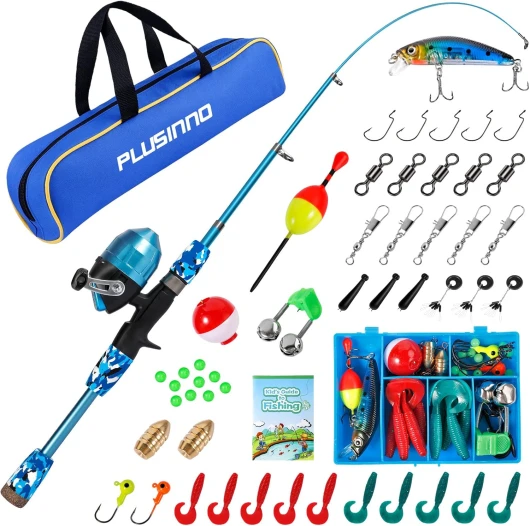
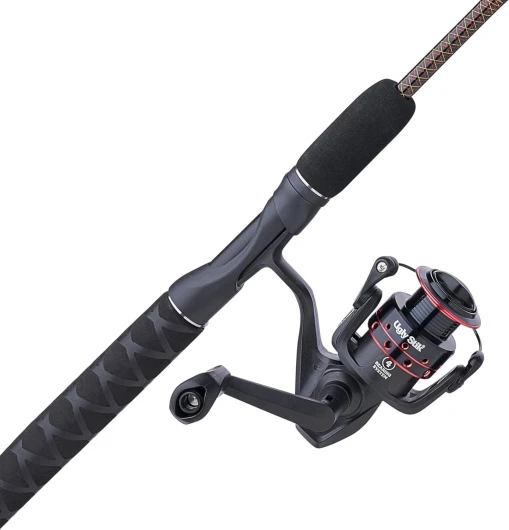
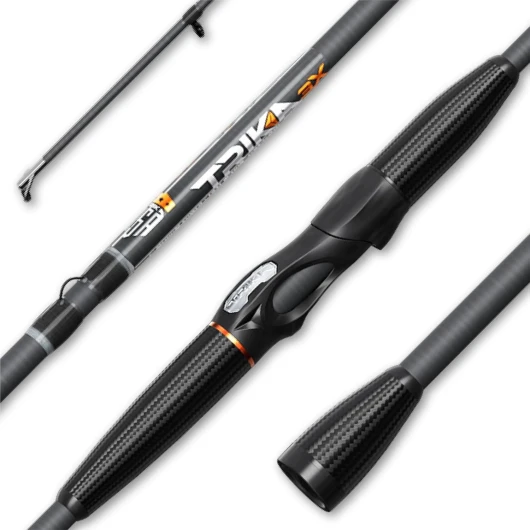
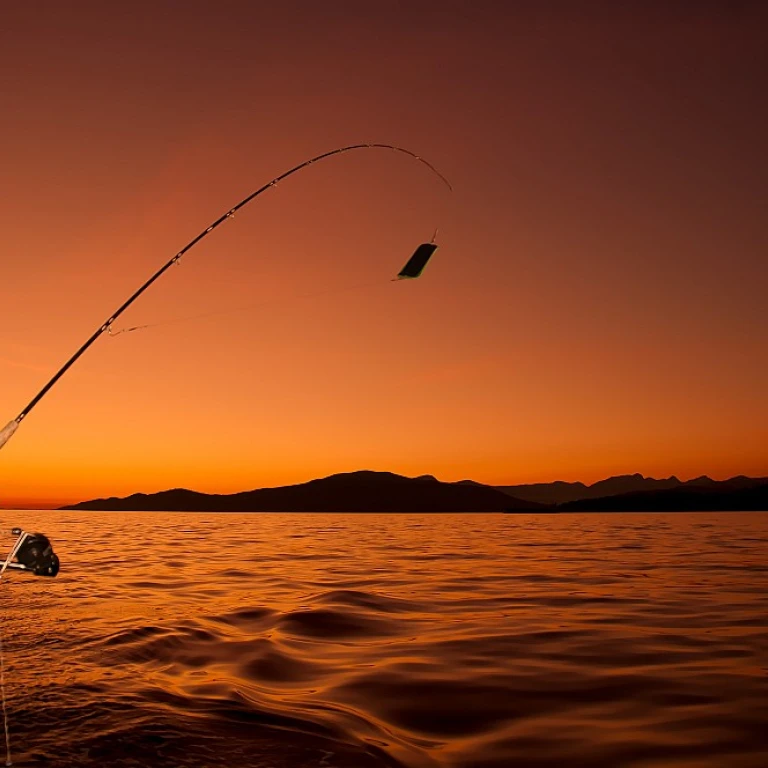


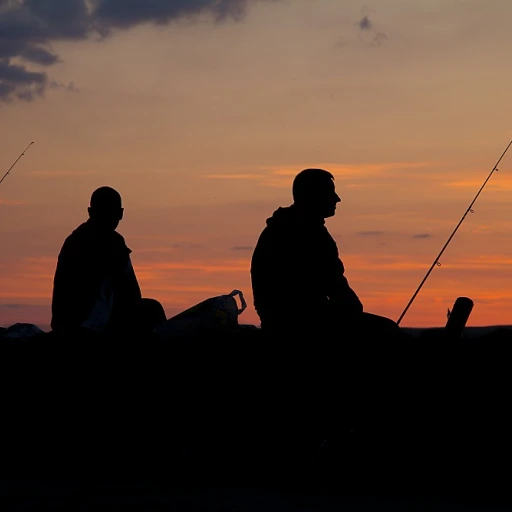
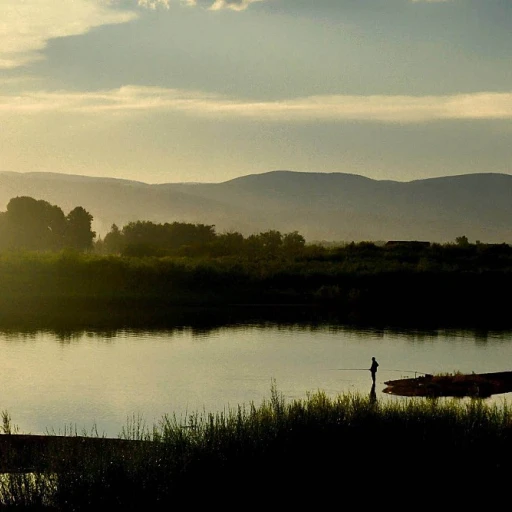
-large-teaser.webp)
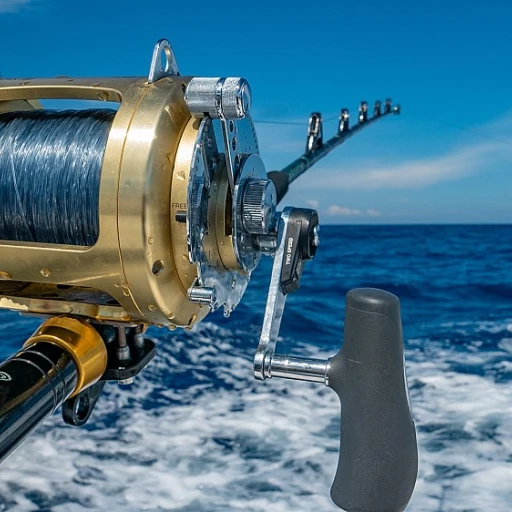
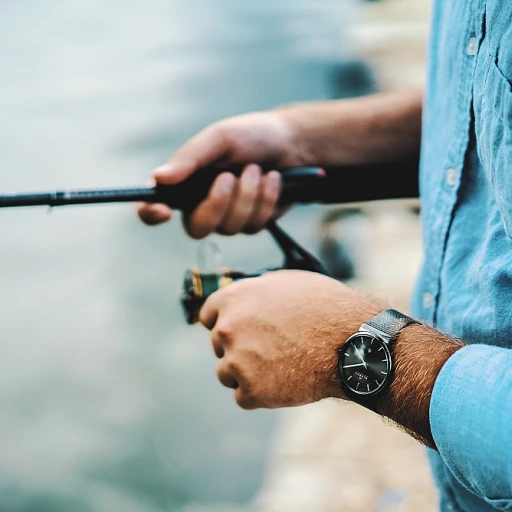
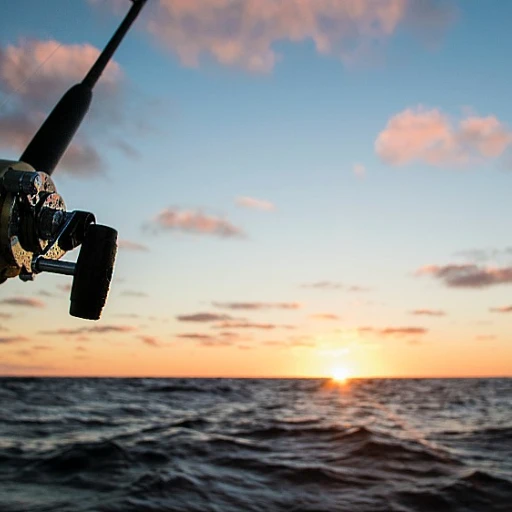

-large-teaser.webp)
